There are many unusual places to visit in Emilia-Romagna, born out of the imagination of their inventors. Let’s leave aside the work of man for today though and focus on the wonders of nature, surprising corners of our region that often reveal an ancient story.
If you love the outdoors and are looking for an unconventional experience, you’ve come to the right place. Here are 10 ideas for an out-of-town trip to the strangest places in Emilia-Romagna created by mother nature.
Pietra Parcellara (Piacenza)
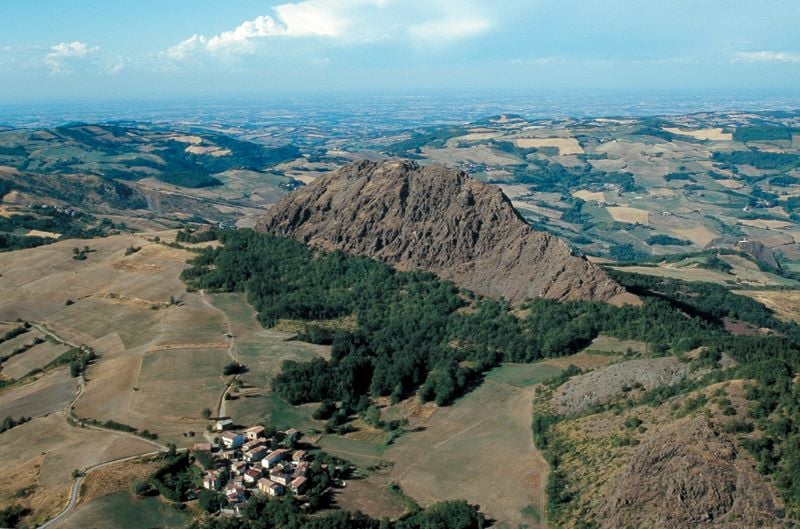
While exploring the Apennine area near Piacenza, you may come across an unusual peak that stands out from the surrounding landscape because of its changing shape and the dark colour of its rock.
We are talking about Pietra Parcellara, a peak that rises between the villages of Bobbio and Travo in the Trebbia Valley. It represents one of Emilia-Romagna’s most important regional geosites, together with the nearby Pietra Perduca.
Known as the ‘Cervino of the Trebbia Valley‘ because of its sharp peak, this solitary rock – a massif of black serpentine known as ophiolite – is actually much lower than its Alpine counterpart, being 836 metres above sea level. The views you get when climbing to its summit, however, is worth admiring. Once you reach the mountain top, your gaze will wander 360° over the Dorba, the Trebbia and the Perino Valleys.
Salti del Diavolo (Parma)
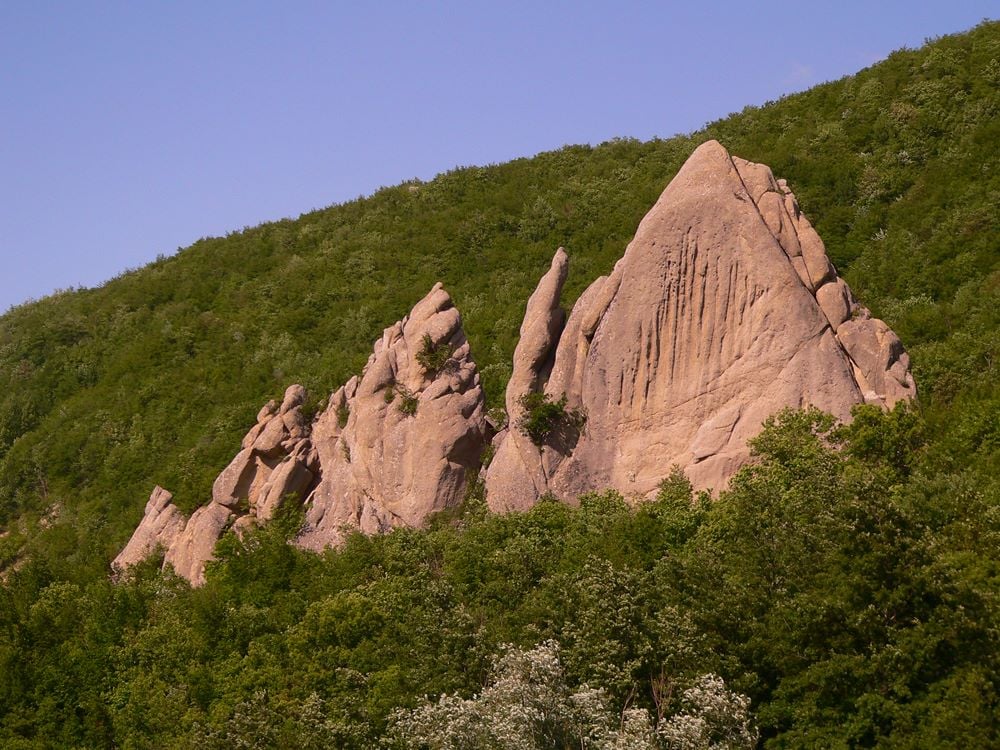
Located near Chiastre di Ravarano and Cassio Parmense, in the Upper Baganza Valley, the Salti del Diavolo (literally the “Devil’s Jumps”) remind us that where mountains rise today, there was once a sea.
These rocky outcrops date back to the Cretaceous period – about 80 million years ago – when the valley was completely under water and submarine environments were sometimes subject to landslides.
The Devil’s Jumps are a tangible testimony of these landslides that have survived the passage of centuries.
rom a geological point of view, we can define them as a conglomerate of different rocks (granites, porphyries, limestones and many others) in the form of spires and peaks. Their peculiar appearance has also stimulated the imagination of its observers over time, so much so that it has given rise to a legend.
Their name is said to derive from an episode that allegedly occurred in the Middle Ages. In order to defend himself from the temptations of the devil, a hermit living in the area got the idea of showing him a crucifix, thus inducing him to flee.
According to popular belief, the Salti would therefore be the footprints left by the devil during his hasty retreat.
To admire the Devil’s Jumps up close, you can take a path called ‘La Via degli Scalpellini‘, which leads from Cassio to Chiastre in about two hours.
Pietra di Bismantova (Reggio Emilia)
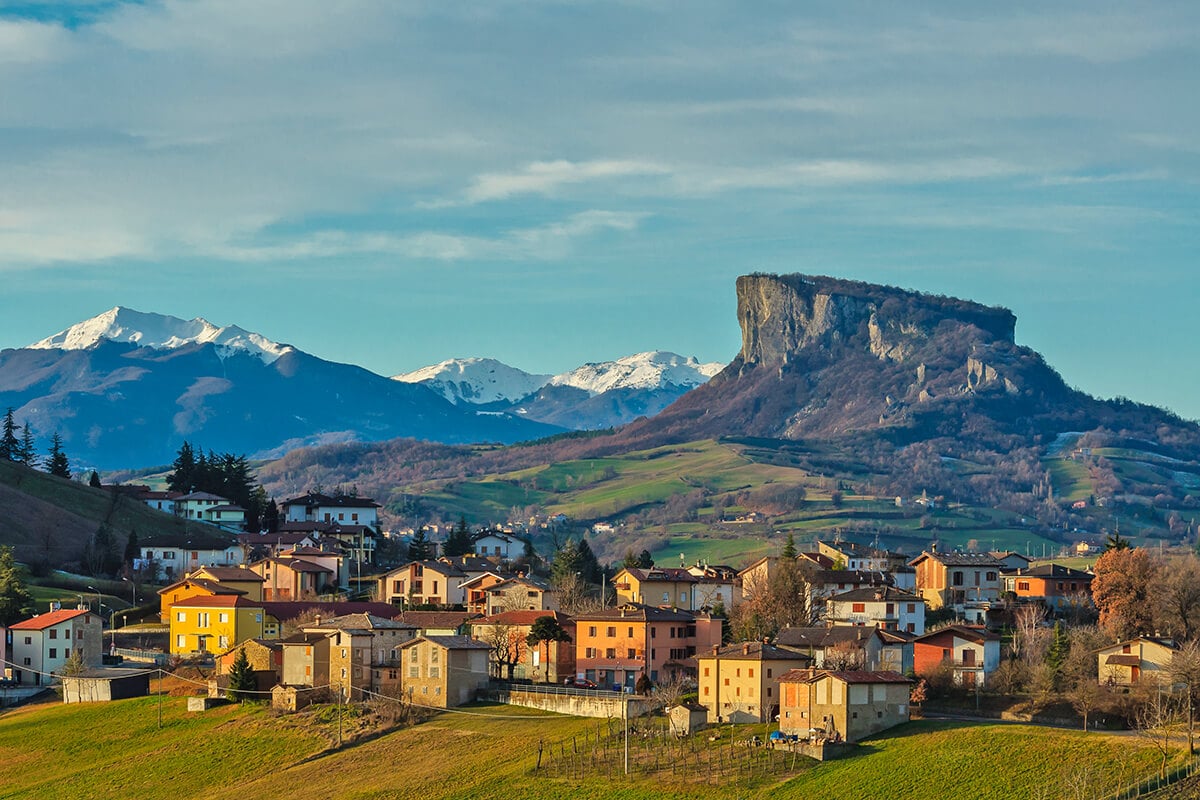
The Pietra di Bismantova (Bismantova Stone) is an iconic place in the Reggio Emilia Apennines, rising almost suddenly from the surrounding plain with its characteristic ship-like profile.
At the sight of this natural spectacle, Dante Alighieri himself was fascinated to the point of quoting it in his Divine Comedy and taking it as an example for his description of Mount Purgatory.
Like the Devil’s Jumps, the Stone is also a marine formation, but one dating from a more recent era (15 million years ago).
Geologists call it a great example of residual erosion, made of a particular type of sandstone known as calcarenite.
To visitors, it looks like a massive, steep-sided mountain crowned by a plateau, the perfect place for a hike in the nature.
One kilometre long, the Pietra di Bismantova is 300 metres high above the neighbouring municipality of Castelnovo ne’ Monti.
To reach its summit and fully enjoy the panorama over the Apennines and the surrounding plains, simply take CAI path no. 697, which starts from the car park at the foot of the Stone and reaches the summit in about half an hour’s walk. Not to be missed on the way up is the small hermitage nestled in the rock.
Gessi Triassici (Reggio Emilia)
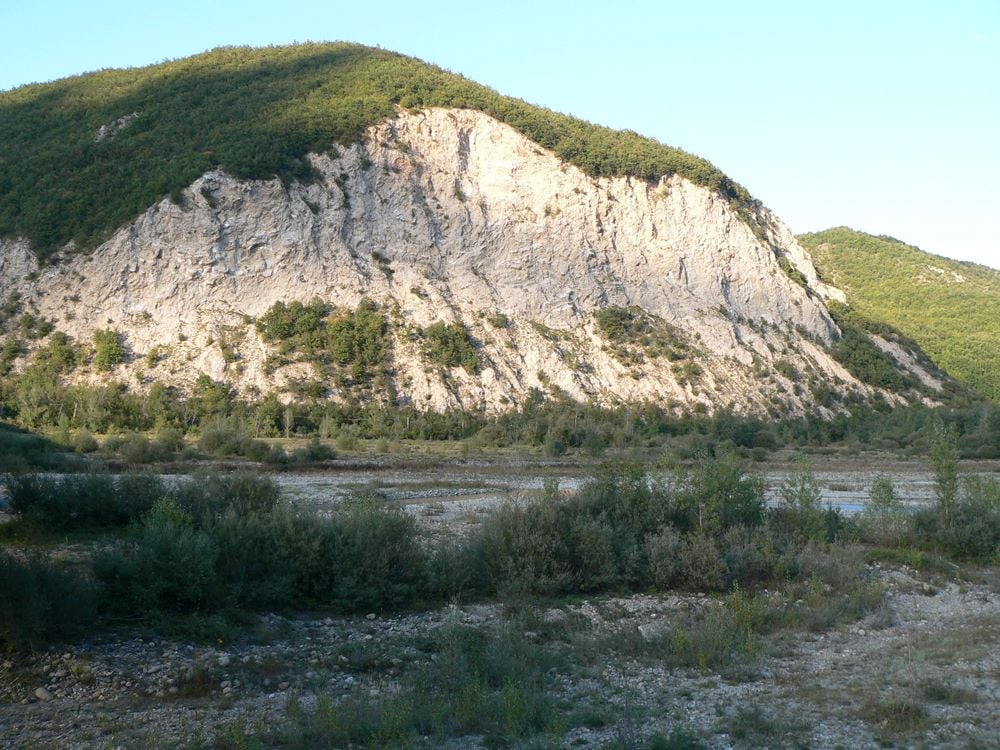
Let’s stick around near the Pietra di Bismantova to discover another natural wonder that was formed 200 million years ago. The Triassic Chalks, also called Evaporites, are the oldest karst formation in the Apennines. But they also represent a place of great geological and natural interest, such as to deserve the title of Unesco World Heritage Site, awarded in 2023.
Situated between the villages of Castelnovo ne’ Monti and Villa Minozzo, in the Reggio Emilia Apennines, the Gessi cover an area of about 10 kilometres along the Secchia river. The flow of water has moulded the rock over time, creating the current steep light-coloured ridges.
The caves are typical of these ancient formations, while it is not uncommon to come across the phenomenon of sinkholes on the surface. The CAI Trail of the Triassic Gypsums can be followed to fully immerse oneself in the atmosphere of the gypsums.
Riserva Naturale delle Salse di Nirano (Modena)
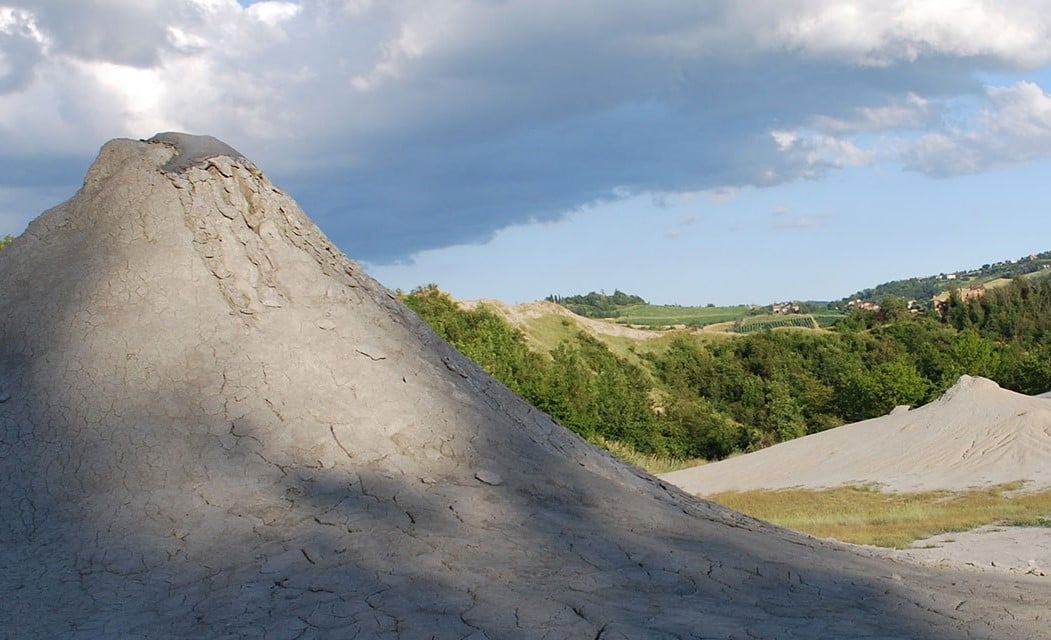
What if we told you that among the most unusual places in Emilia-Romagna there are also volcanoes?
Although they are rather similar in appearance, they are not actually real volcanoes. In fact, the Salse di Nirano Nature Reserve in Fiorano Modenese is home to grey cone-shaped formations with small craters on top.
These are mounds of muddy water and sludge that have the peculiarity of being cold and salty – hence the name salse – and originate from surfacing of gas and seawater from underground deposits.
Known since ancient times, the so-called ‘mud volcanoes’ are still active today. Anyone wishing to explore this almost lunar-like environment will be able to admire the characteristic muddy water flows up close.
To visit the Salse di Nirano Reserve, we recommend taking the Giro delle Salse, a route of about two hours that runs around the perimeter of the Salse and allows you to observe both the ‘volcanoes’ and the enchanting surrounding landscape.
Sassi di Roccamalatina (Modena)
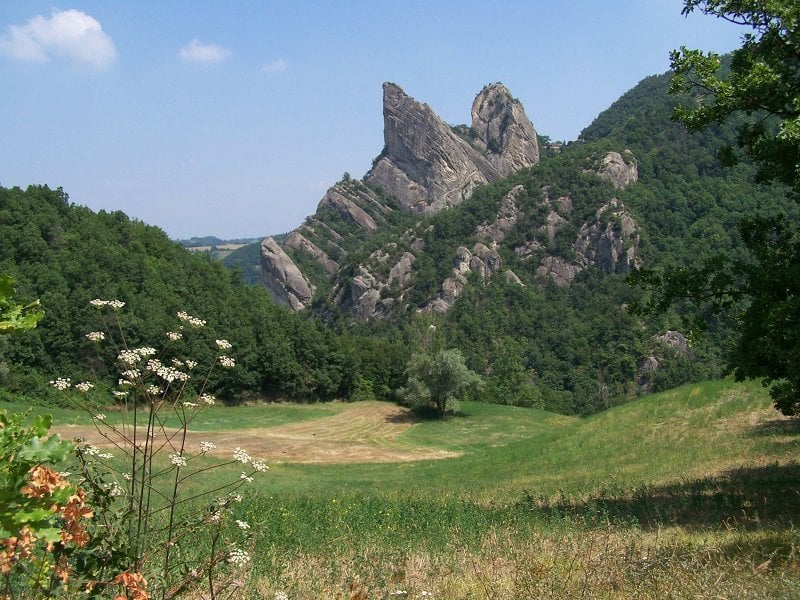
Not only volcanoes. In Roccamalatina, a district of Guiglia located about thirty kilometres from the Salse di Nirano, there is another unusual place worthy of a visit. To spot it, simply look away from the surrounding rolling hills and linger over the impressive rocks, a nesting area for peregrine falcons and other birds of prey.
The Sassi di Roccamalatina are over 70-metre high sandstone giants settled about 25 million years ago, now part of the regional park of the same name. As previously seen for other unusual places in Emilia-Romagna, you can observe the rock formations up close here too thanks to the network of trails stretching in the protected area, which can be travelled on foot, by bicycle and even on horseback.
Those who wish to admire them from afar, however, can head for the village of Rocca di Sopra, which offers a splendid view of the Sassi pinnacles.
Grotte di Labante (Bologna)
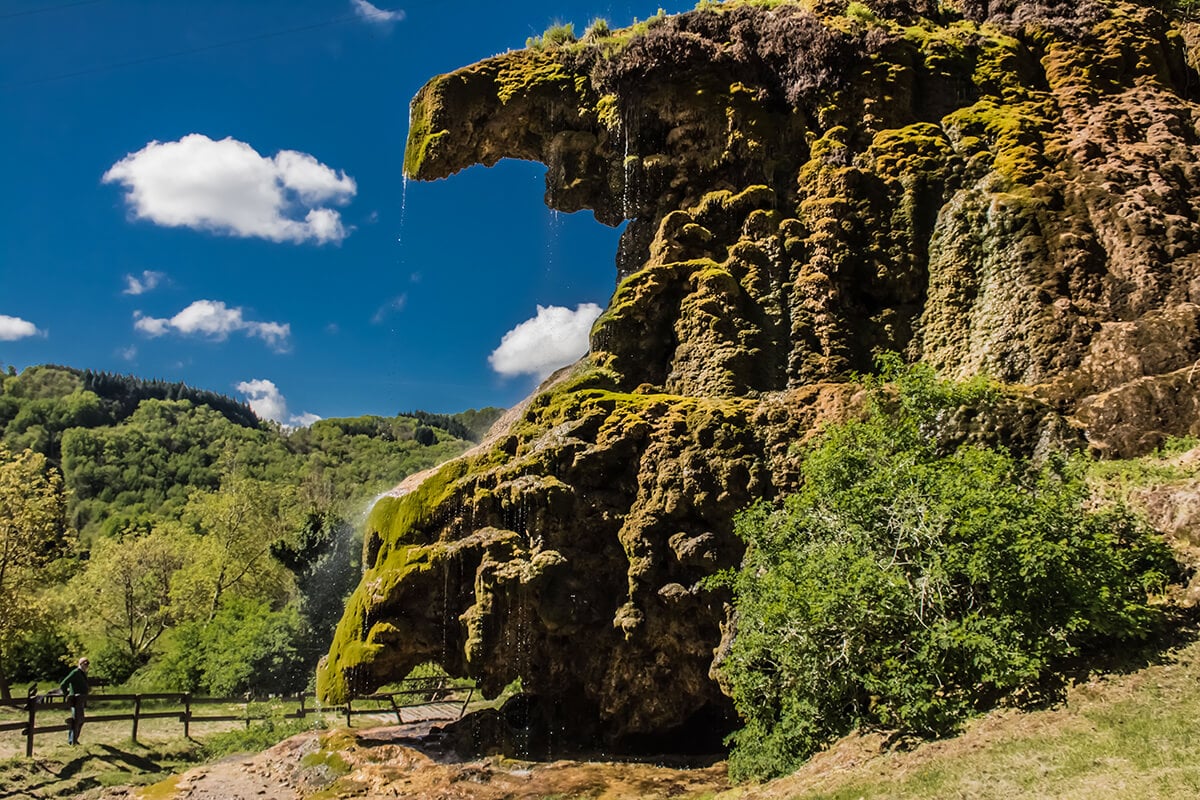
Located in Castel d’Aiano, the Labante Caves are famous for being the largest primary travertine caves in Italy.
A definition that may sound mysterious to the uninitiated, but which actually refers to the nature of their rocks (travertine, rich in calcium carbonate and born through sedimentation) and to its size – 54 metres in length – when primary caves usually do not exceed 4-5 metres.
Apart from their geological peculiarity, the Labante Caves amaze visitors with their truly unique profile.
If you look at them from the side, they might remind you of a springboard or a creature with a long nose stretching out towards the small pond below. This is the spot where the waters from the San Cristoforo spring are falling down, creating a small but striking waterfall.
Although the interior of the caves is not fully accessible, the area offers many possibilities for a nature trip, from picnics to hiking trails.
Grotte di Soprasasso (Bologna)
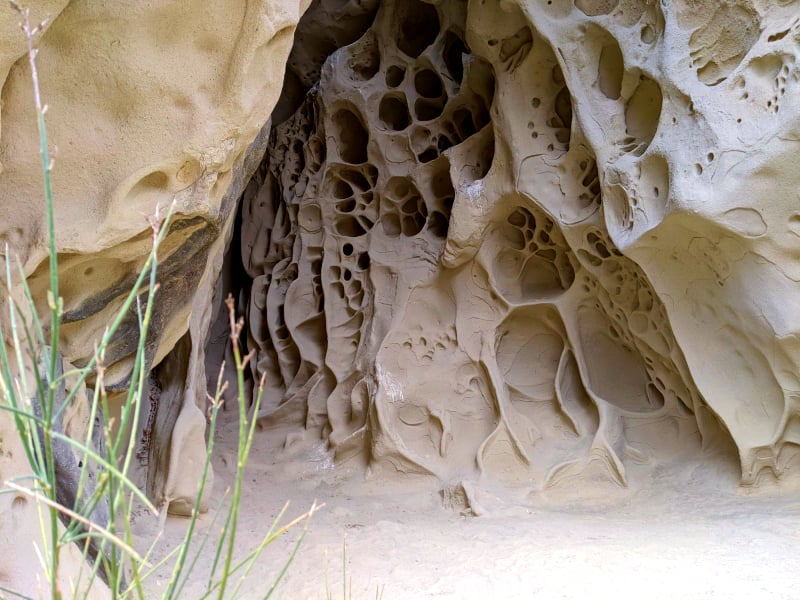
Let’s stay in the province of Bologna to visit the Soprasasso Caves, not far from Riola di Vergato. Among the unusual places in Emilia-Romagna created by nature, these caves are perhaps most likely to stimulate the imagination of those who visit them.
This is due to the so-called tafoni, cavities carved into the sandstone rocks by atmospheric agents, probably water and wind. Over time, this phenomenon has generated very peculiar patterns which bring to mind images of various kinds. Some compare them to cheeses such as Gruyère and Emmental, others to a sponge or even to bone tissue.
The caves, or rather the inlets that open up in the rocky outcrop, are actually three: in addition to those of Soprasasso, we also find Grotta Buia and Grotta dei Piatti. The best way to observe them up close is to follow the loop trail starting from Cavalloro, near Riola.
Vulcano sul Monte Busca (Forlì-Cesena)
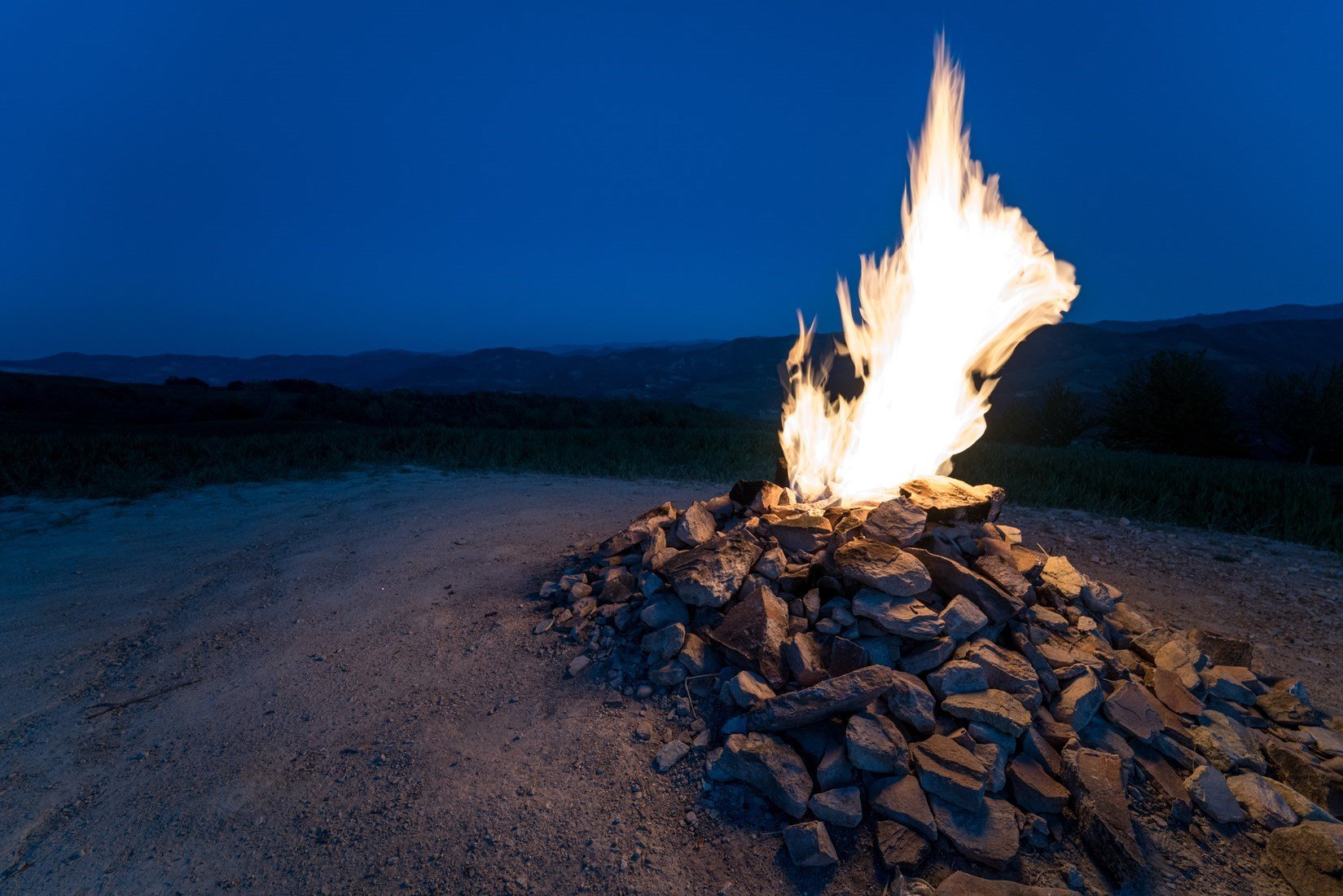
When it comes to unusual places, Romagna has a lot to offer too. Just a few minutes from Tredozio, a small village in the province of Forlì-Cesena, is the so-called Volcano on Mount Busca, a strange natural phenomenon already known in the 16th century.
Although it is known as the ‘smallest volcano in Italy’, it is not a true crater, but rather a burning fountain fuelled by hydrocarbon gases (methane) from underground, which ignite when in contact with oxygen.
A perennial and very impressive flame, especially at sunset, which rises on the summit of the mountain at an altitude of about 740 metres. To reach it, one must leave the car near the summit and walk on a very short path, which leads directly to the volcano.
Marne di Verghereto (Forlì-Cesena)
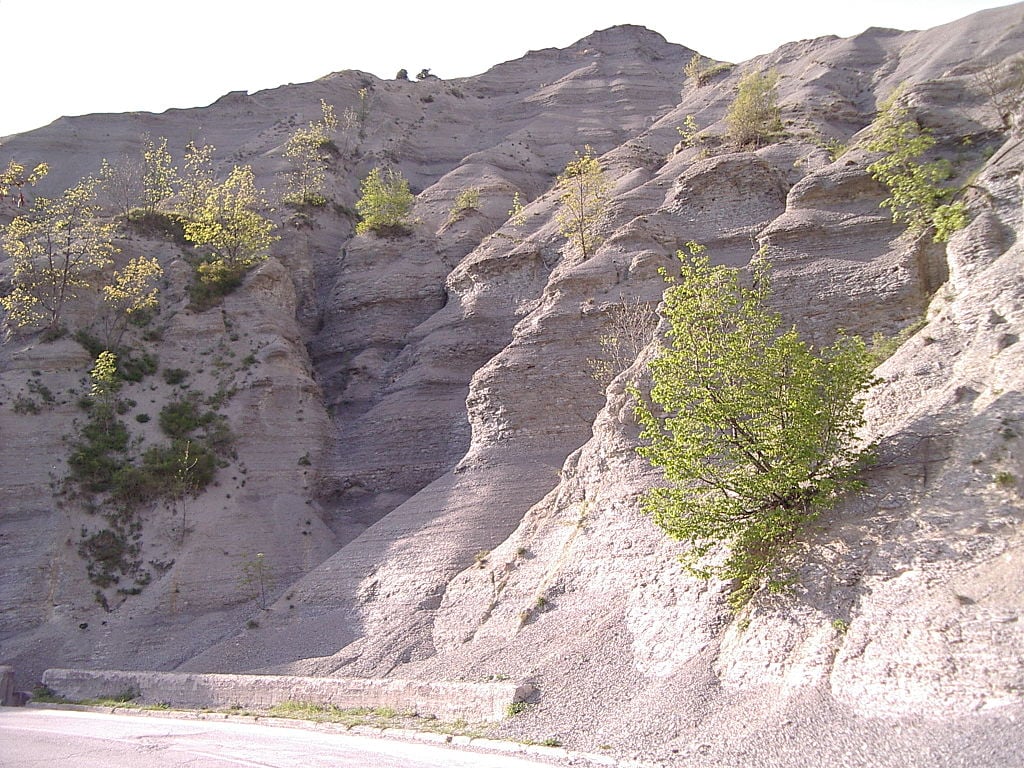
Among the unusual places in Emilia-Romagna, we cannot fail to mention the Marne di Verghereto. We are in an unspoilt natural area at the foot of Monte Fumaiolo (about 1400 metres above sea level), not far from the Tuscan border.
But what is meant by ‘marne’ (marls)? These are rocks containing clay and calcium carbonate in more or less similar proportions, which, smoothed by weathering, have given rise to incredible gullies of a thousand shades of grey.
Whoever arrives at this place really has the feeling of being on another planet, full of rocky outcrops, ridges and deep grooves reminiscent of lunar craters. To experience this, leave your car at the Marne car park and walk along the gravel path that will take you directly to this wonder of nature.
Author

Maria Grazia Masotti
An eternal dreamer, but I try to stay grounded. I was raised in the countryside but I love big cities. I’m always ready for a trip, as long as it’s sustainable.
You may also like
5 natural spots to discover in Emilia-Romagna
by Elisa Mazzini /// September 19, 2016
The Labante Caves in Castel d’Aiano
by Maria Grazia Masotti /// July 19, 2023
Top Rock Climbing Destinations in Emilia-Romagna
by Walter Manni /// January 12, 2017

Interested in our newsletter?
Every first of the month, an email (in Italian) with selected contents and upcoming events.
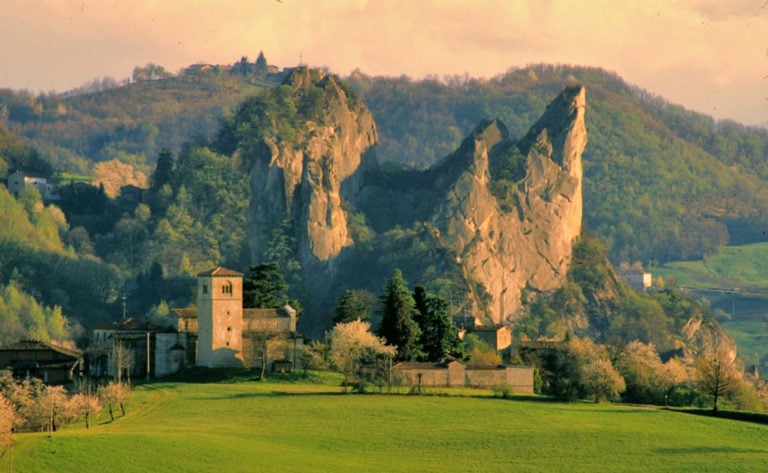
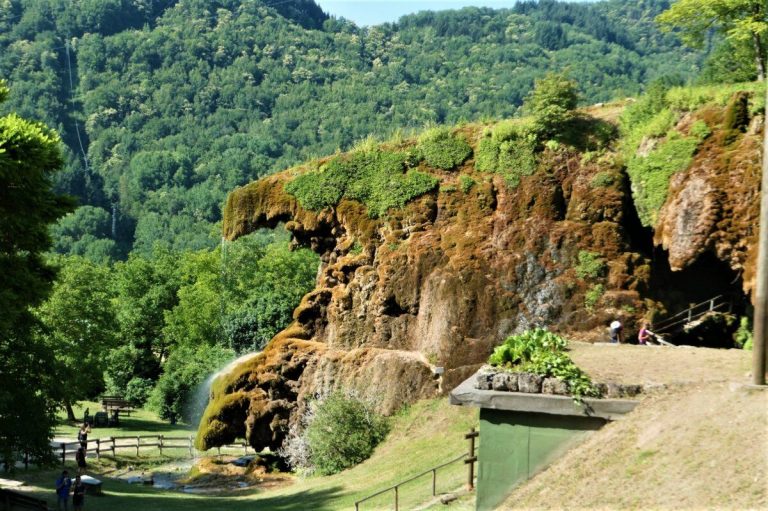
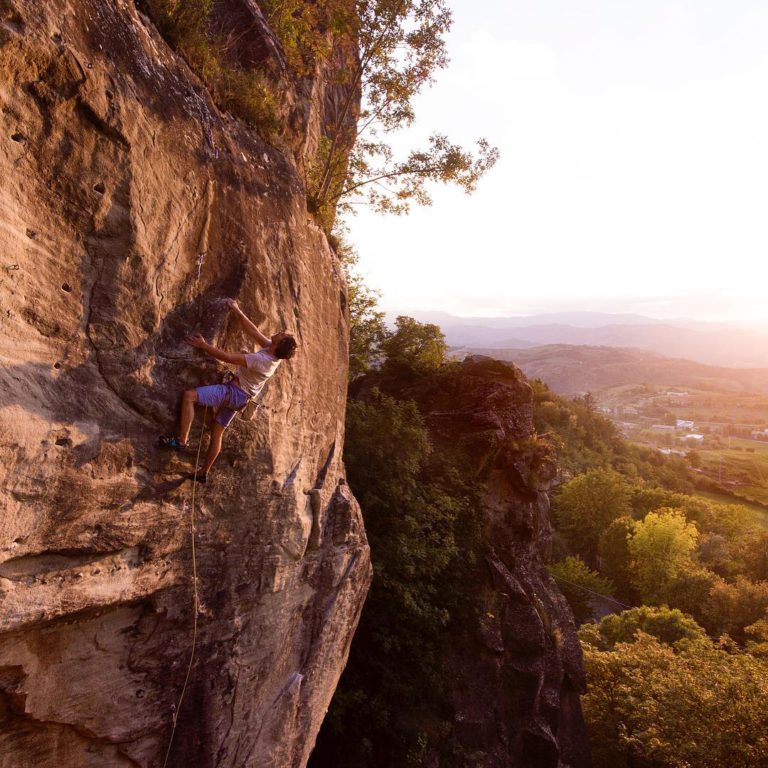
Lena Dirsater
Thank you for sharing these interesting, exciting new places to explore!